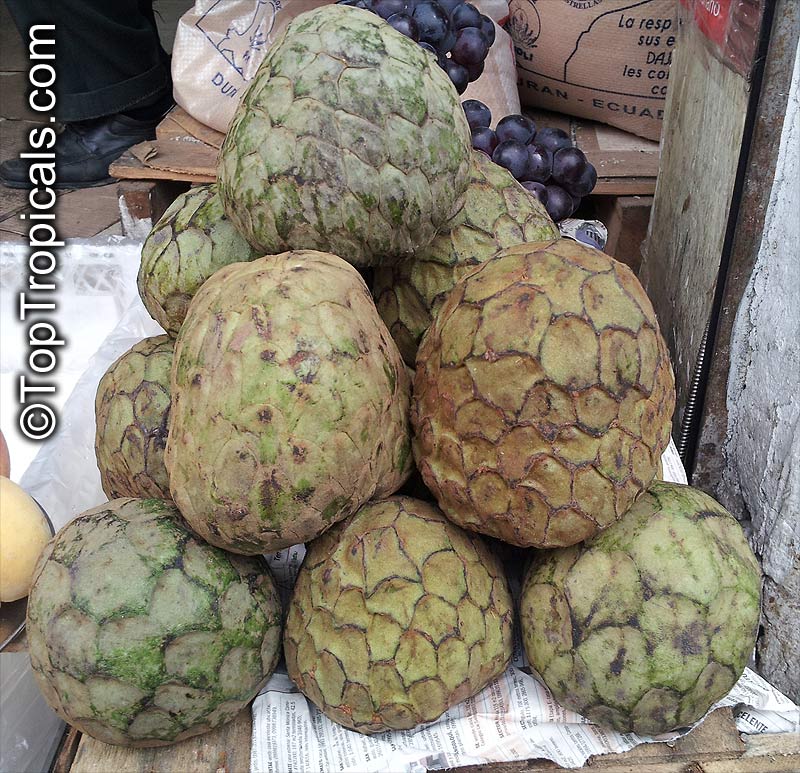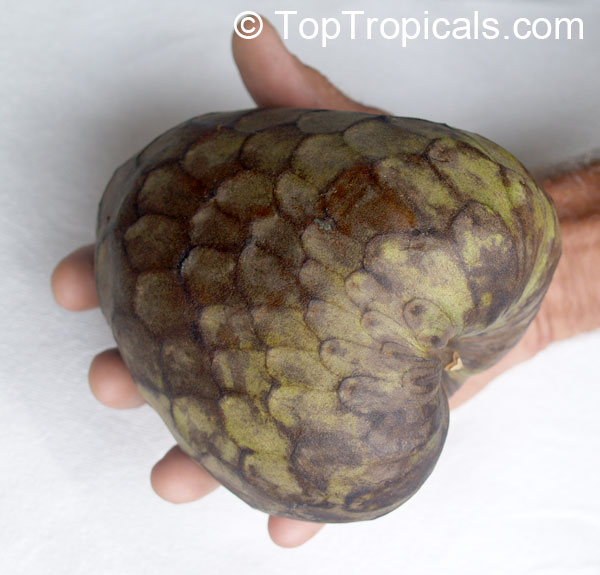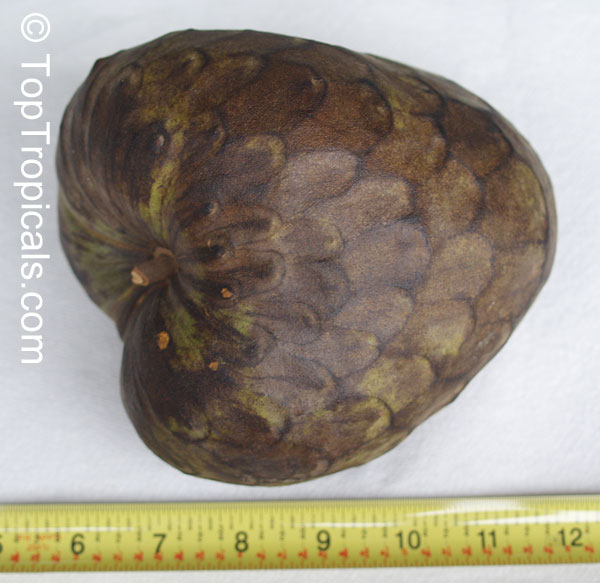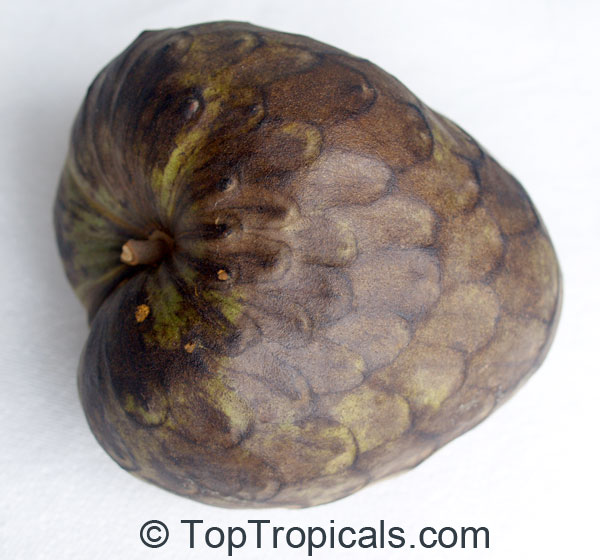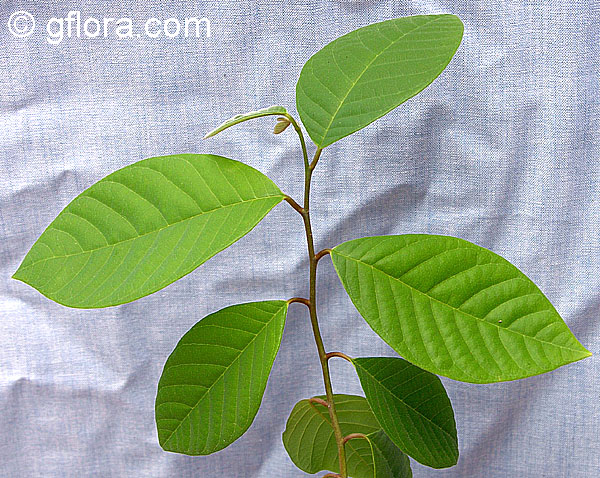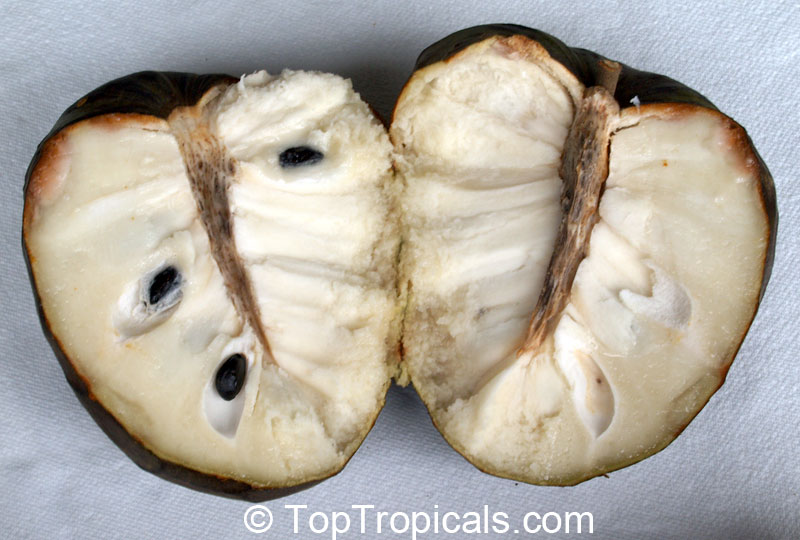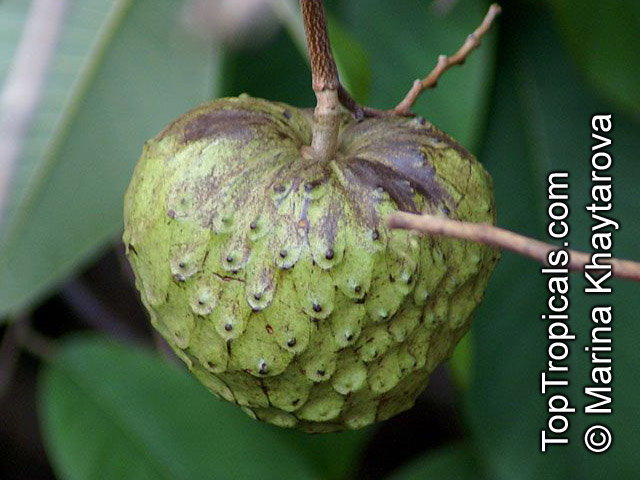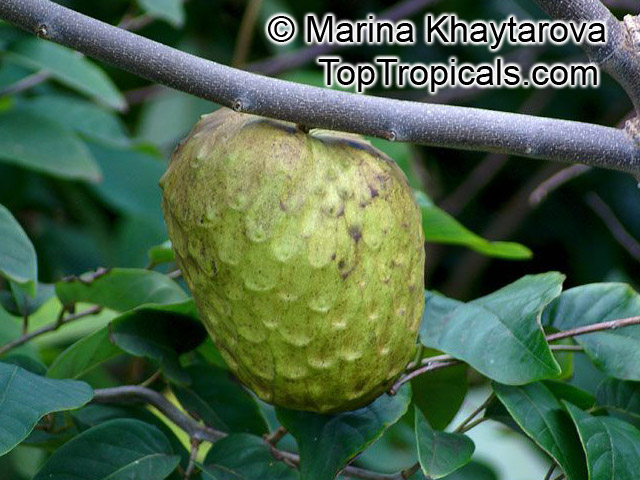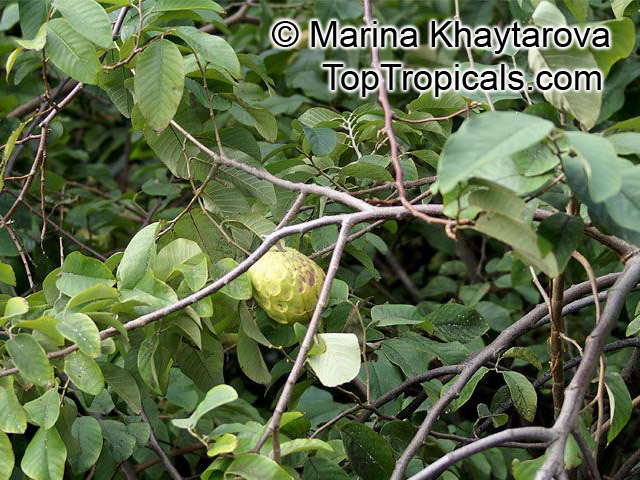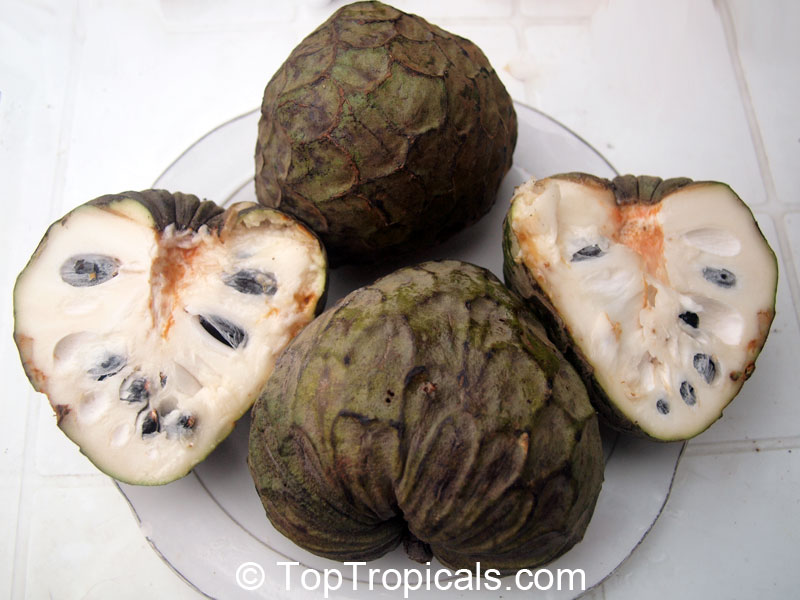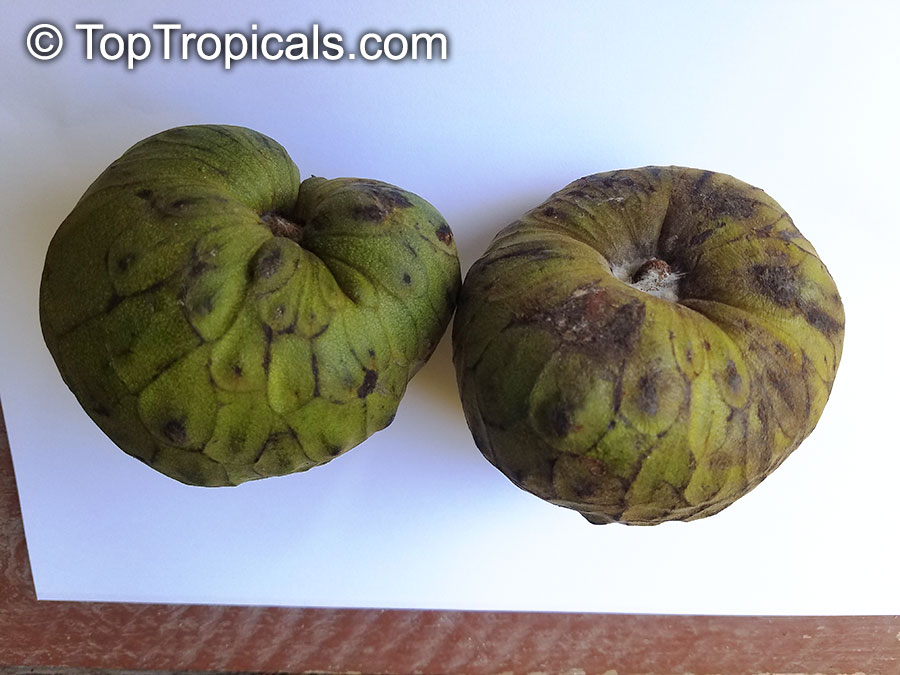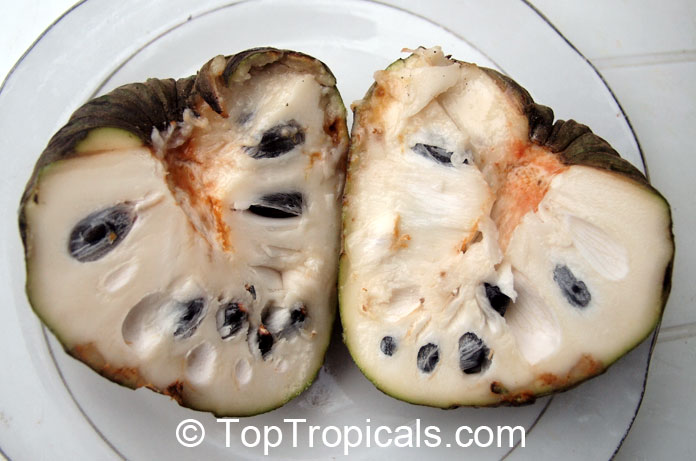Annona cherimola (Cherimoya)
Top Tropicals Plant Encyclopedia
Botanical name: Annona cherimola
Common names: Cherimoya, Chirimoya, Custard Apple
Family: Annonaceae
Origin: Peru, Ecuador, and Colombia






Fruit has green, scaly exterior with numerous "eyes". Inside is white, juicy flesh surrounding the inedible black seeds. It is a very nutritious fruit containing significant amount of carbohydrates, dietary fiber, vitamins, minerals and electrolytes. The antioxidants and phytonutrients present in cherimoya aid in the prevention of oxidative stress-induced diseases such as cancer, heart diseases, and aging.
Grown in USDA Zone 9-11, Annona cherimola (Cherimoya) is a small tree, reaching 10-20 ft in height and width. It is native to Peru, Ecuador, and Colombia, but is commercially grown in Australia, South America, Asia, Spain, Italy, and California. This fruit tree prefers much sun, though it can tolerate some semi-shade. It requires regular water and moderate fertilizer to thrive.
The cherimoya fruit is said to be one of the best-tasting fruits in the world, with a creamy pulp and sweet fruity flavor. The pulp is eaten fresh, out of hand, and the seeds are toxic, with the potential to work as an insecticide when crushed. On the tree, the cherimoya fruit is large, ranging from 4-8 inches in length, sometimes weighing more than 5 pounds. Additionally, the antioxidants and phytonutrients present in the cherimoya fruit are known to aid the prevention of oxidative stress-induced diseases.
Cherimoyas prefer a warm environment, with summer temperatures of 65-80F and winter temperatures of 40-65F. They also require hand pollination due to their inability to be fertilized by their own pollen. When grown outside of its native region, trees must be babied in cold months and kept away from frost. Within 3-4 years they will begin to bear fruit, blooming with clusters of small flowers in late winter to early summer, and ripening their fruit from October to May. Fruits are ready for harvest when their skin slightly yellow or pale green, or when it gives a bit when touched.
Similar plants: Annona cherimola (Cherimoya)
- Annona cherimola x Annona squamosa (Atemoya)
- Annona diversifolia (Annona ilama)
- Annona glabra (Pond Apple)
- Annona haitiensis (Annona)
- Annona hayesii (Wild Cherimoya)
- Annona hypoglauca (Wild Cherimoya)
- Annona maritima (Aratikum)
- Annona montana (Mountain Soursop)
- Annona muricata (Soursop)
- Annona purpurea (Soncoya)
